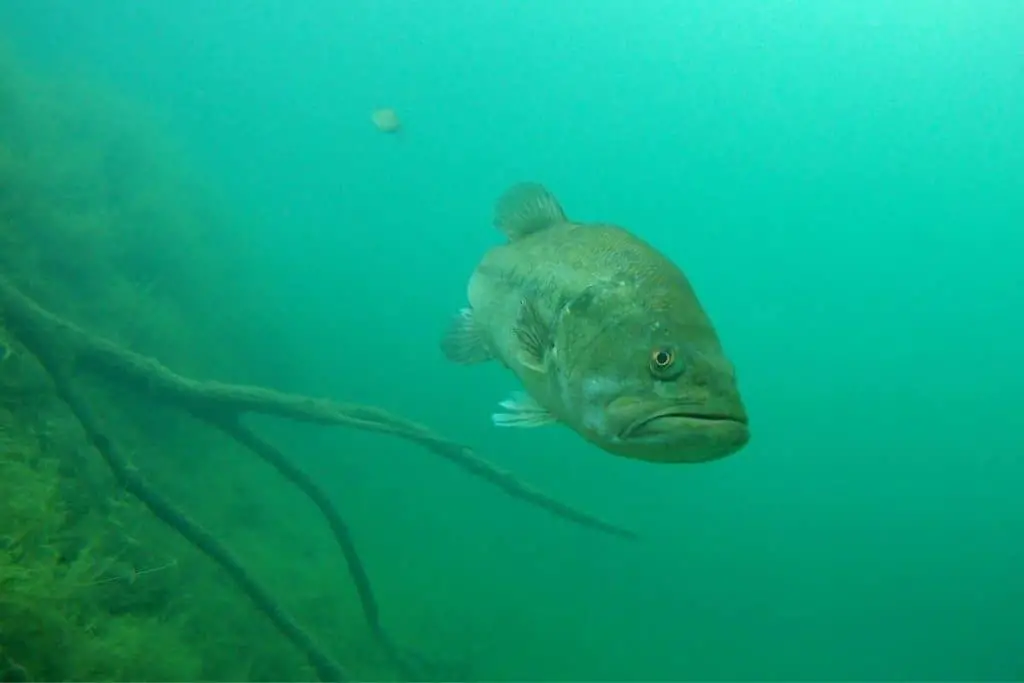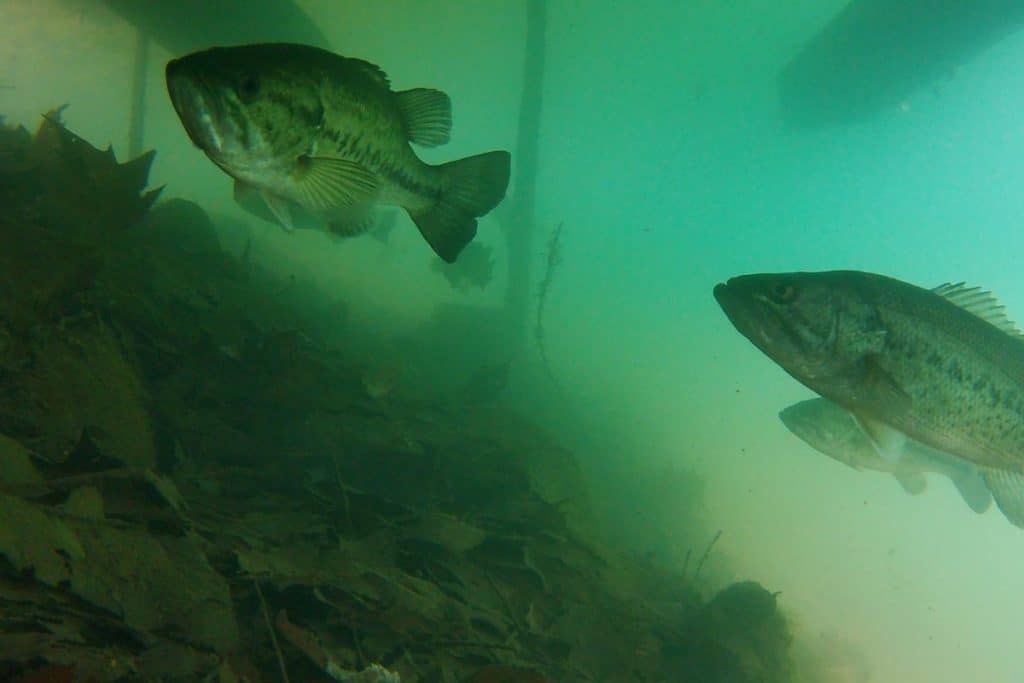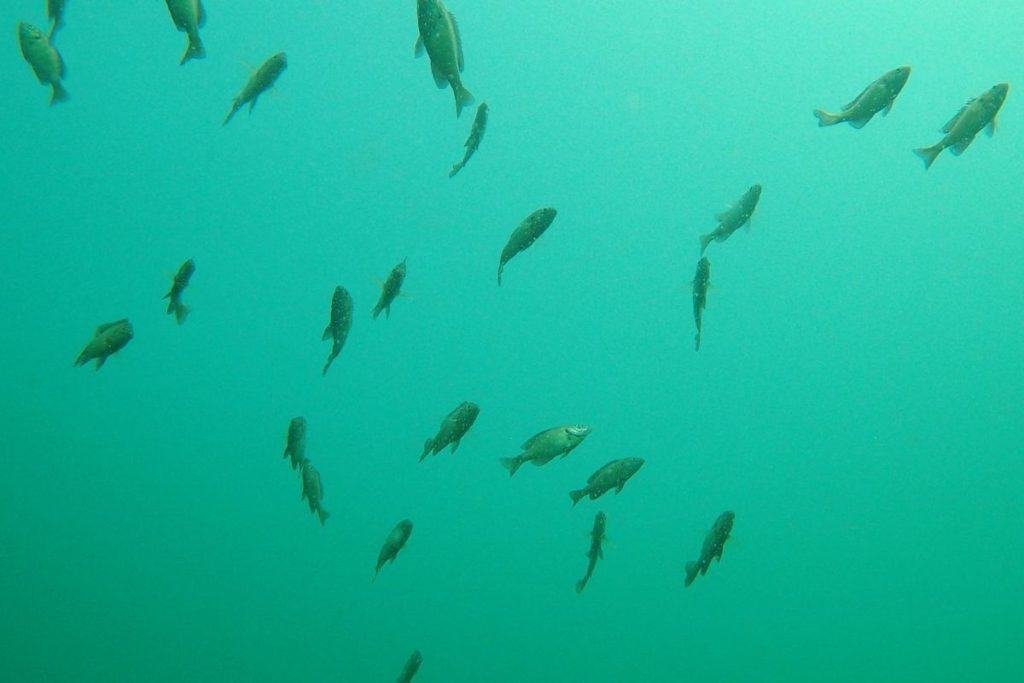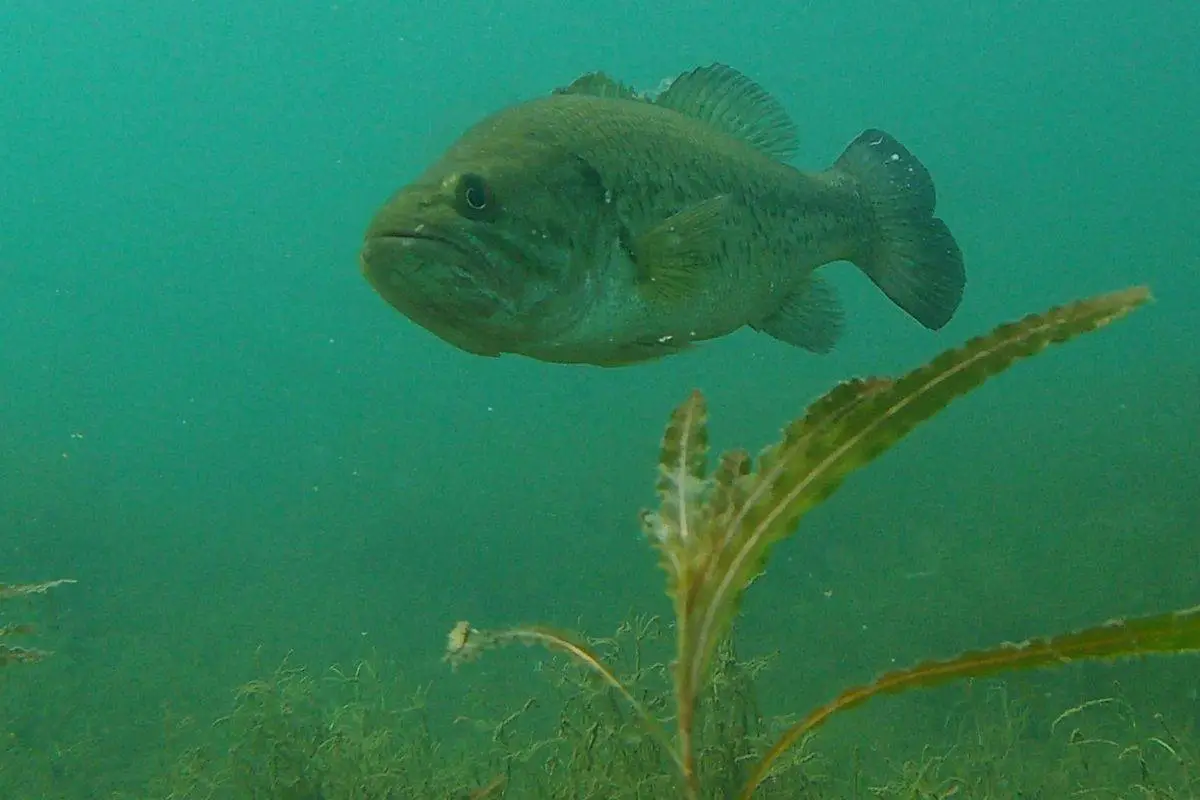Every angler wants to catch bigger bass. As largemouth and smallmouth bass reach a more mature age, their behaviors differ from the younger bass in the area.
Big bass use deeper water to their advantage when they can. Anglers searching for big bass in deep water need to focus on water clarity, oxygen, temperature, and potential food sources.
The key terms we need to first discuss are “bigger” bass and “deeper” water.
Big Bass is Relative to the Water We Fish
This may seem obvious, but it is often forgotten.
When searching for bigger bass in deeper water, what is bigger – really?
On my home lake, that means going from bass that are less than 2 pounds to bass that are in the 3 – 4 pound range. A really big bass would break the 6-pound mark.
That may be different on the waters you fish. Maybe 4 pounders are quite common and you are probing the depths for an 8+.
Deeper – not necessarily Deep
This idea is often misunderstood as well and is reliant on the water you are fishing, as well as other factors.
When fishing Florida lakes the term “deeper” may mean probing that 8-10 ft range. In the highland reservoirs of the Ozarks, it could mean 40 ft or more below the surface.
When looking for bigger bass it is critically important to differentiate between deeper and deep.

Water Clarity and the Impact it Has On Bass
Bass are keen predators and have refined a variety of senses over the millennia to make the most of the opportunities presented to them.
Like humans who have lost one of their five senses and the others then become more acute, bass adapt to what they are presented with.
In waters with extreme clarity, the largemouth and smallmouth that live there will rely a great deal on sight. When fishing impoundments or rivers that tend to run the color of mud, then detecting vibrations with the lateral line is much more important.
How does this relate to bigger bass and deeper water?
When the water is very dirty or muddy the bass will most often be shallow and tight to hard cover or structure. Deeper water in this situation may be measured in small increments of only a foot or two.
Whereas, deeper water in a clear lake can mean moving from shallow targets to probe depths below the 30 ft mark.
Water clarity should always be the key starting point when thinking about depth and what that really means.
How Oxygen Determines Depth
Not a surprise here that water with quality oxygen levels will allow fish to move deeper.
Some things to look for include current and vegetation.
Whenever there is flow, or current, oxygen levels will be better. Sometimes this water movement is from the natural flow of a river, tributaries dumping into a lake and even the pulling of water from dam operators on large reservoirs.
Other factors such as wind and boat traffic can stir up the surface of a lake or river as well.
The other thing I look for is healthy vegetation. Green plants use carbon dioxide and release oxygen.
If the water you are fishing is clear and the vegetation is found deep, that means the oxygen levels are good and there will be fish at that depth as well. As an example, I routinely pull up aquatic grass at depths past the 20 ft mark on my home waters.
Bigger bass use this and are often located deeper than their smaller and shallower counterparts.

Temperature and Where Bigger Bass are Found
Cold-blooded creatures position themselves according to their comfort level.
Reptiles bask in the sun and when temperatures dip, they are likely not as active.
Bass seek out temperatures that make them more comfortable. At the end of winter, when the north bank is gathering sunlight and melting ice quickly, the shallows are soon full of fish of all species. They are enjoying the warmer temperatures.
This does not necessarily mean they are sitting out in the open sunshine, but may be under docks that provide shade. Yet the warmer water is moving in-and-around that dock.
In the summer, bigger bass will slip to deeper water to find temperatures that are more comfortable. But, keep in mind, when a body of water stratifies and a strong thermocline takes hold, that water temperature near the surface and right above the thermocline will be very similar in temps.
I have seen water at twenty-five feet have the same temps as water that is 3 ft deep.
How Prey Positions Bigger Bass
When all else fails when trying to locate bigger bass, think about food.
Find the food – find the bass. It is probably the most reliable strategy that bass anglers can employ.
Bass are not always actively feeding, but they will be nearby. Are we ever that far from the kitchen?
Bigger bass love to lurk just below their prey. If you have balls of shad in the waters you fish, those bruisers are often just below them. If your waters have huge schools of panfish check the same areas.
I have spent hundreds of hours filming bass and their prey. Time-and-time again when I find schools of prey, the better fish are close. Usually lurking in water just under the food source.

How To Catch These Bigger Bass
The best tactic I use that has paid dividends many times is to back off the bank 1 – 2 cast lengths.
It is so easy for us to solely focus on visible cover and cast to what we can see. In some waters, especially those with poor visibility, this works well. If the water you fish has decent visibility, then forcing yourself to pull off the bank can result in a better quality fish.
Use lures that can effectively probe deeper water, yet cover water to make locating bass easier.
For me, this includes lures and presentations like deep diving crankbaits, Carolina rigs, spinnerbaits, jigs and Texas-rigged plastics.
Make sure that you are feeling the bottom. When fishing deeper, it is easy to keep pulling the lure up and then it will pendulum through the water column and not look natural. Lower that rod tip and peel slack line if needed to keep the lures in the zone.
Tight lines. Be safe out there and make sure to encourage someone today. You never know how you may change their life forever.
Isaiah 6:8

